Valuations
Jewelry Artist Wallace Chan Embraces Spirituality, Cherishes Childhood Memories And Gemstones That Teach New Perspectives
We asked the Chinese artist and sculptor what he values most—in art and in life.
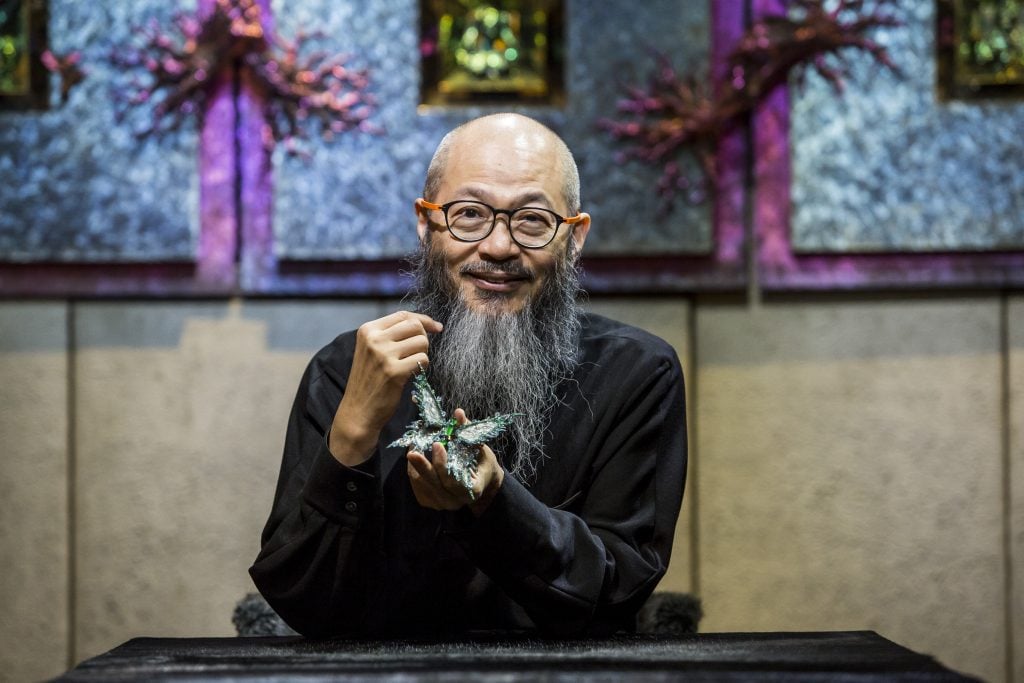
We asked the Chinese artist and sculptor what he values most—in art and in life.

Cathy Fan

So much of the art world orbits around questions of value, not only in terms of appraisals and price tags, but also: What is worthy of your time in These Times, as well as your energy, your attention, and yes, your hard-earned cash?
What is the math that you do to determine something’s meaning and worth? What moves you? What enriches your life? In this new series, we’re asking individuals from the art world and beyond about the valuations that they make at a personal level.
The story begins in 1973 when 16-year-old Wallace Chan, with HKD $1,000 purchased tools and machinery to begin making jewelry. He set up a workstation in a stairwell and began to embark on what he calls “a lifetime commitment.” Fast forward to today, it has been exactly 50 years.
In early September, Wallace Chan’s exhibition “The Wheel of Time” was held at Christie’s London headquarters. This is the largest-scale exhibition to date in Europe for the artist, featuring 150 pieces of jewelry and 6 titanium sculptures, which also retrospectively examines and explores Chan’s half-century of creativity.

Wallace Chan’s exhibition “Totem” at Fondaco Marcello on the Grand Canal in Venice
A self-taught artist, Wallace Chan is the first jewelry artist of Chinese descent to have his works collected by the British Museum and has invented multiple techniques throughout his creative career of half a century, such as “the Wallace Cut” and “the Wallace Porcelain.” Beyond his identity as a jewelry artist, he continues his explorations in other fields such as sculpture. In May 2022, Chan held his first large-scale art exhibition “Totem” at Fondaco Marcello on the Grand Canal in Venice. This exhibition summarized his years of work in sculpture and installation art, including a series of sculptures made of titanium and iron.
In Christie’s “The Wheel of Time” exhibition, titanium also features prominently as a material in one of the highlighted pieces, an extraordinary black diamond brooch sculpture “Legend of the Colour Black.” The impressive center stone of the piece, one of the largest known cut black diamonds in the world, weighs 312.24 carats, alongside silver grey diamonds, crystal sapphire, black agate, titanium, and the Wallace Chan Porcelain.
Titanium, often called the “space metal” and bearing a futuristic color has been a long-term subject of experimental practice for Wallace Chan. It’s a material with which the artist has a special emotional connection. Initially, his understanding of titanium came from an article about a pacemaker. He said, “I discovered that there exists such a metal in the world that is so biocompatible it can even fuse with bones; it’s lightweight, yet extremely strong.”
At the exhibition, we caught up with Wallace Chan and asked what he values in art and life.
How do we understand the value of jewelry?
The values of jewelry are the values of art, and they are connected to time, spirituality, and materials. Given that the states of time, spirituality, and materials are always changing, the values of jewelry change too.
Some things may lose their value with the passage of time but some things, when aged, might become more valuable. A higher demand entails a higher price. Having said that, emotional memories have an important role too. A ring gifted by our parents or lover, for example, might not be expensive but we do not sell it even if others offer a high price. This is how emotional values exert their effect.
When gemstones are turned into jewelry, there are four stages of civilization. First, we decide how a stone should be cut after it is unearthed. This stage is about how humans develop tool-making and stone-polishing skills. There are many types of gemstones, some are transparent, some are opaque and some are translucent. We need to see a stone from different perspectives to know how to cut it. Then we come to the second stage which is about how gemstones should be worn. This is the civilization of craftsmanship. We learn about how to set stones and how to make wearable jewelry. The third stage is innovation. We do things that have not been done before, in terms of craftsmanship and stone-cutting. The fourth civilization is culture. Can philosophy inspire more people to feel emotions about art? In my opinion, the record-breaking auction price of a jewelry piece is a result of the interaction between time and materials, as well as that of the four stages of civilization. That is where true values lie.
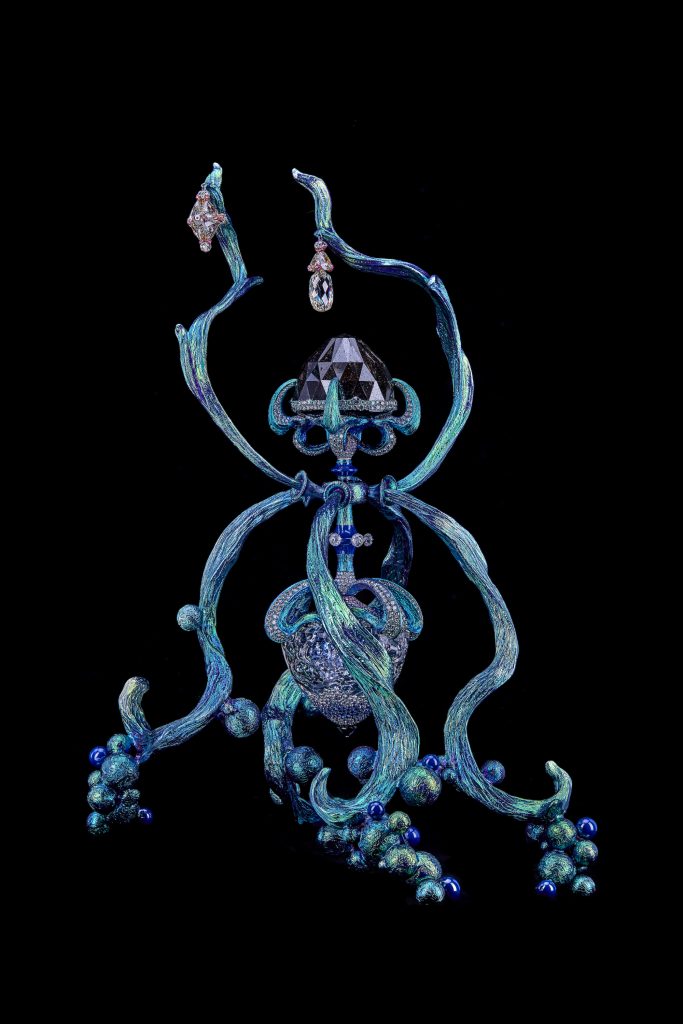
Legend of the Colour Black, shoulder brooch sculpture by Wallace Chan
And what about sculpture? What are its internal values? Why do you use titanium?
I am interested in all kinds of materials. And once I develop an interest in something, I will start to communicate with it and learn about it constantly. Take a piece of malachite as an example. With different angles come different patterns. And we will know what will come out only when we carve into the stone. When it is guiding us, we simply will have to follow, and sometimes we will get incredible results. Handling materials is like interacting with other people – constant communication is vital. There are materials that I do not understand but still, I am curious and never stop learning. I think about what materials are closest to eternity when sculpting, and titanium is the answer. Titanium is used in the space industry and given that I want to use materials to present the notion of eternal time, titanium is the ideal material for my sculptures.
The personalities of materials show only when we interact with them. Therefore, I will work with different colors, materials, and cuts, to create endless possibilities that are ever-changing.
What are the things that you treasure most?
My existence is what I treasure most in the universe. Being childish, curious, and humble at heart makes us more open-minded and understanding. Curiosity means developing a fondness for everything in the world, and that drives us to go on a humble quest. When we get smaller, what we see and perceive with our eyes and minds gets bigger.
Is there something very tiny that means the world to you?
During the creative process, say when we are polishing a crystal, we might see a very small spot. We probably dare not to polish it further because that spot can lead to a crack. In this sense, the spot is infinitely big in the micro-world. The universe is the carrier of all our planets but in my kind of imaginary world, there are countless universes beyond this universe.
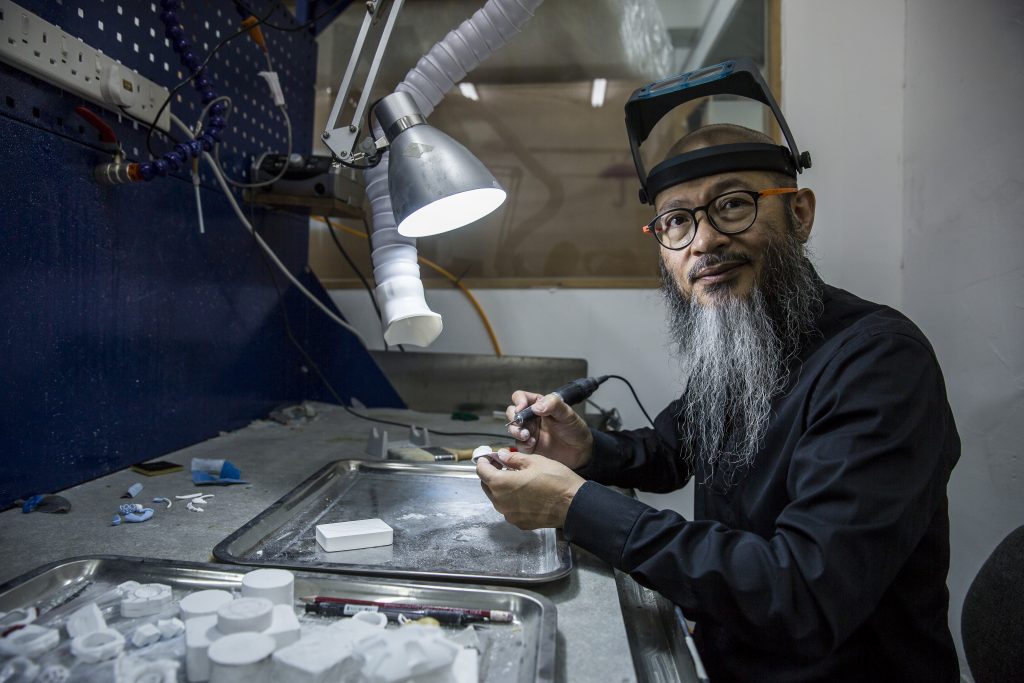
Wallace Chan
What do you consider to be your best investment to date?
My best investment was made in 1973 when I asked my parents for HKD $1,000. I spent $600 on mechanical equipment, $300 on a piece of malachite, and $100 on some tools. Then I set up a work table in the back staircase of the kitchen. During the day, I studied and practiced there and when it was nighttime, I took it back to the kitchen. It is the best investment I have ever made. Creation has been my life-long commitment since the very beginning and I have devoted myself to it for half a decade.
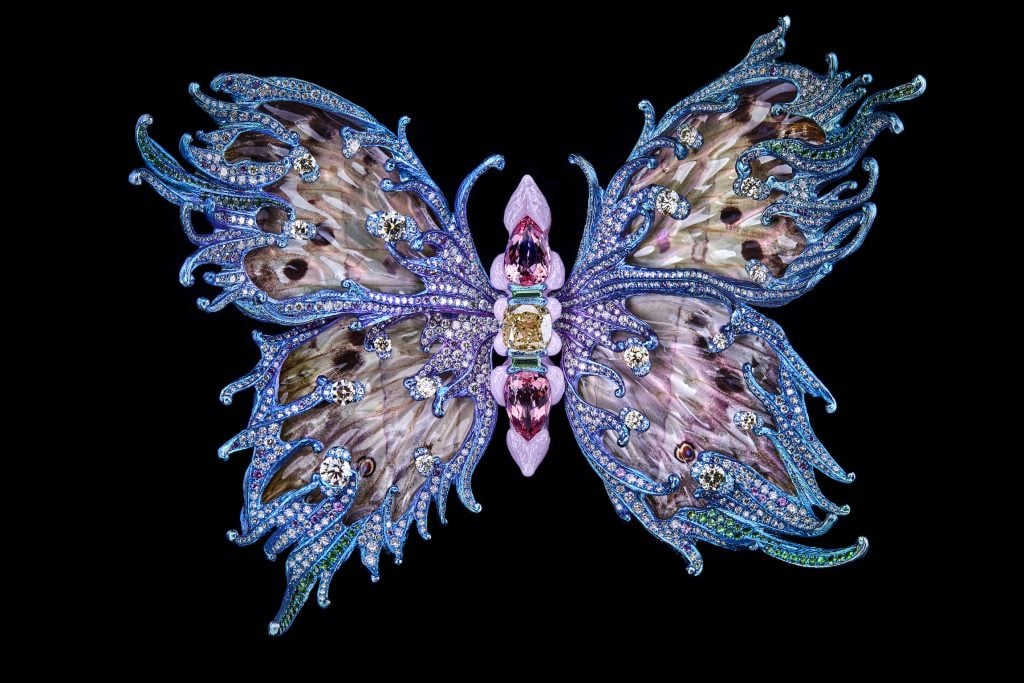
Forever Dancing-Wind’s Tale by Wallace Chan
What was the last thing you splurged on?
I am spending a lot of money, as well as time every day. On the creative side, I have spent a lot on the technology of metallurgy because the attempts have not been completely successful yet, and the technology of metallurgy is endless. I always want to create with new materials and techniques available in the field so I am still trying and experimenting. The results are sent to overseas universities that deal with metallurgy for analysis, and after receiving the analysis, I do more research. This investment is for life.
And here comes an interesting question! If you get $100 today and you must spend it all, what will you buy with this money?
A windfall of $100, that reminds me of my childhood. When I was small, my father only gave me 20 cents for breakfast, and I would have a bowl of congee. It would not be possible if I wanted to have some extra noodles. My trousers were long and my shoes were loose, meaning that they could be worn for a few more years. At that time, my classmates had better shoes than I did. They were more beautiful and well-fitted. I once dreamt of having seven or eight dollars so that I could buy shoes, clothes, a nice school bag, and a pair of glasses. I still remember that a pair of glasses cost $12 dollars. So if I found $100 today, I want to relive a day from my childhood and get an ice cream.
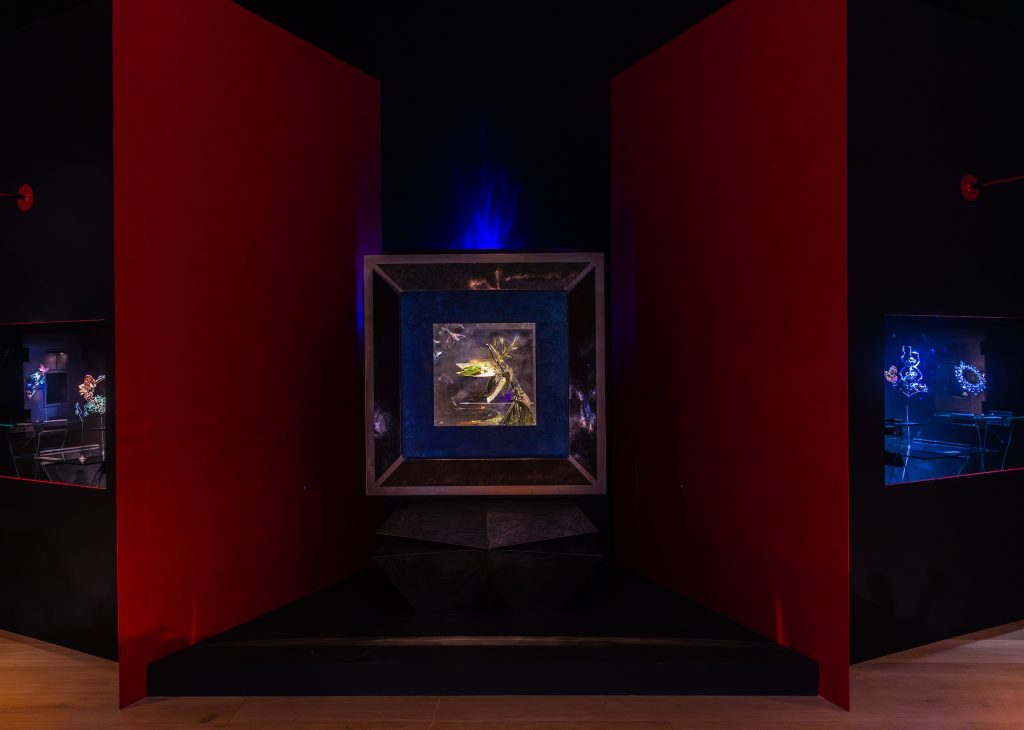
Installation view of Wallace Chan: The Wheel of Time at Christie’s London
When looking at a work of art, whether it is your own work or other works, what is the most important value to you?
What I value most is whether a piece of work can keep offering us something new, fueling our curiosity and arousing our emotions. To do this, the creator must be very experienced and have a thorough understanding of the world. Just like poems, why do poems created a thousand years ago still inspire today? I think it is important for a work of art to have the same attributes.
What do you think is your greatest asset?
Curiosity. Being aware that I am ignorant, I am always in the pursuit of knowledge. I think I do not have any value per se but I have generated values because I have created things of value. One day when I am gone, these values remain. That is why eternality is what I am going after.
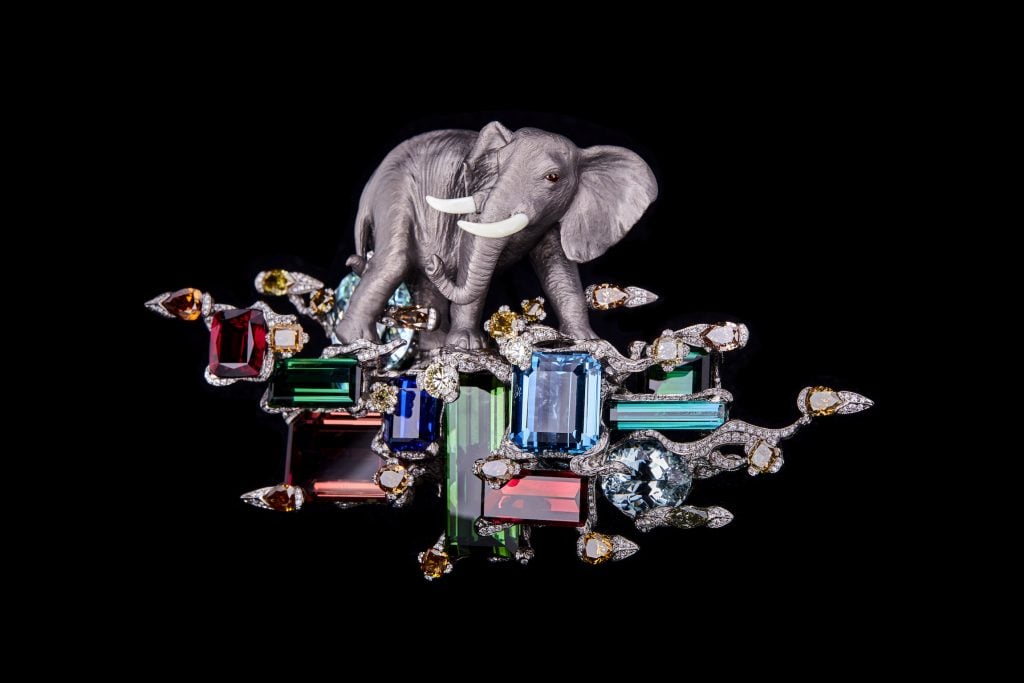
The Beauty of Greatness by Wallace Chan
Do you still have any goals that you would say are valuable? Or any wishes that you want to fulfill?
I live in a dream. I am a dream chaser. A dream not realized is a dream unreal. When we are turning it into reality, something unexpected will happen along the way. For example, I gave my best for this exhibition, and as a result, I received acclamation and attention. To me, if I live every moment and every day well, then my dreams will come true. Dreams are abstract and far away, and if we do not live to the fullest and seize the moment, how can we realize our dreams?
Should the public know more about jewelry?
I wish that people could look at a work without first looking at the value of the gemstones. They should first think about why the work appeals to them and whether it has aroused emotions. To me, looking at jewelry is like looking at a work of art, I see the existence of time.
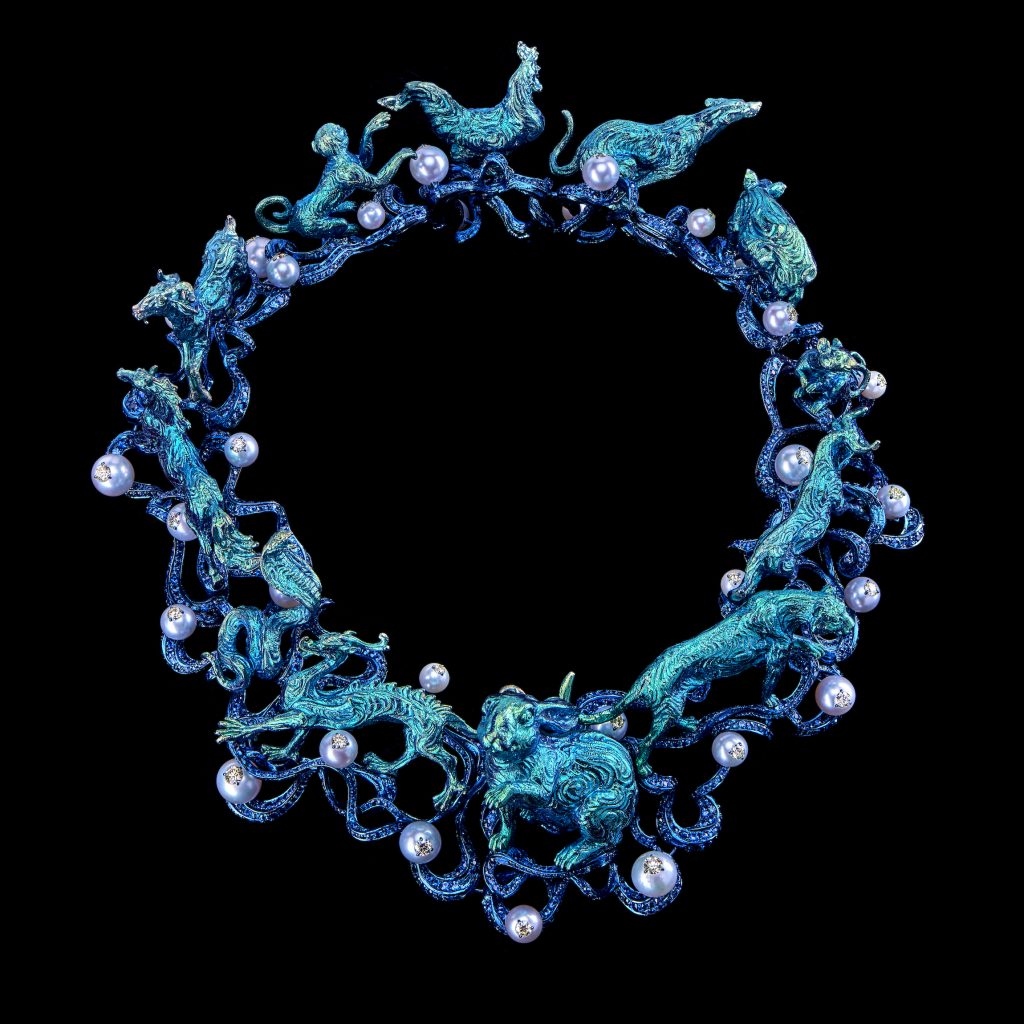
The Wheel of Time by Wallace Chan.